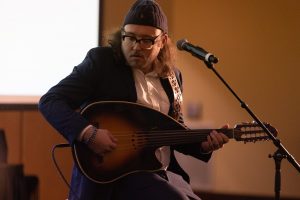
Asher Shasho Levy plays the oud. All photos by Meryl Schenker.
By Hannah S. Pressman
From a painting to an aria to a human face, the works of art which qualify as “masterpieces” depend mainly on individual perception. Beauty is in the eye of the beholder.
What, then, is the role of community in art? How does our experience of seeing change when we view art with others? Can a collective context affect which pieces of a culture are deemed beautiful enough, or important enough, to be passed down?
Such questions of cultural production and communal reception were at the forefront of the University of Washington’s Muestros Artistas (Ladino for ‘Our Artists’) Sephardic Arts Symposium. Held on February 27 and 28 at the University’s Seattle campus, this two-day event featured six Sephardic artists from across the country, and across disciplines, showcasing both their creativity and culture.
“There is very little public discussion of Sephardic art, let alone in academic environments,” explained Jennifer McCullum, Assistant Director of UW’s Sephardic Studies Program (SSP). “With Muestros Artistas, we were hoping to offer both the artists and audience a forum to explore what it means to create Sephardic art in the 21st century, and to illustrate how these various mediums of music, painting, poetry, and prose can offer meaningful points of entry for discovery, reflection, and appreciation of the Sephardic experience.”
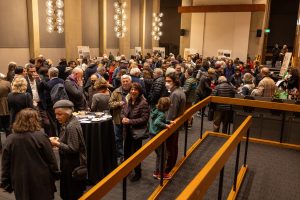
Attendees mingling before the Muestros Artistas performances
Since the inception of the SSP over 10 years ago by Prof. Devin E. Naar, the Isaac Alhadeff Professor of Sephardic Studies, cross-cultural collaboration has been a hallmark of the program. Part of the Stroum Center for Jewish Studies, based within the Henry M. Jackson School of International Studies, Sephardic Studies is a field that builds bridges, and its approach to Muestros Artistas was no different.
The UW School of Art and Hillel UW were not only sponsors of the event, but also sites of scholastic discussion, along with the Burke Museum and the Henry Art Gallery. “I think the format was really valuable,” said Prof. Gabriel Solis, Divisional Dean of the Arts. Solis, an ethnomusicologist who has Sephardic roots himself, facilitated a private workshop with the artists at the Burke. His conversation with the group revealed each artist’s unique positionality. “There were some significant differences in [the] kinds of purposes for art and relationships to art,” he said, particularly in the ways their craft intersected with their Sephardic identity.
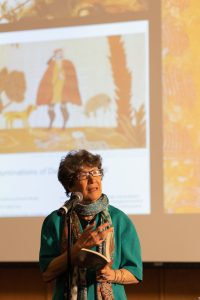
Sephardic writer Jane Mushabac reads an excerpt from her novel
New York-based writer Jane Mushabac took full advantage of her time on campus, visiting Prof. Noam Pianko’s “Funny Jews” course as well as Prof. Canan Bolel’s “Guided Readings in Ladino,” the newest addition to the Middle Eastern Languages and Cultures curriculum this past year. In both classes, Mushabac—one of the only American Jewish writers creating original work in Judeo-Spanish today—showed students examples of her Ladino material. “We all want to change the constricted narrative of what Jewish means,” said Mushabac, referencing the ongoing cultural bias towards Eastern European Jewish representation. “My fiction opens a larger picture of who Jews are, what their language is, and where their families are from.”
This vision of a more inclusive sense of Jewish culture resonated at the symposium’s culminating event: a public showcase in Kane Hall that featured Sephardic cuisine, presentations, and a panel discussion moderated by Dean Solis. “The moment I walked in, I realized that this was much more than an exhibition of Sephardic artists,” recalled Seattle community member Dov Pinker.
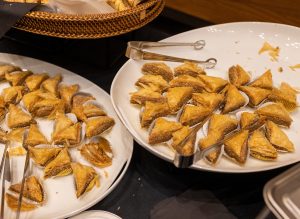
Large platters of delicious Spanakopita – before they disappeared!
“As an Ashkenazi Jew, I think it’s critical to understand that the Jewish experience is so much more rich, diverse, and flavorful than what popular culture portrays. The artists […] brought to life this rich diversity. It was truly moving.”
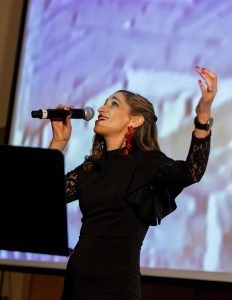
Sephardic singer and composer Sarah Aroeste sings a song in Ladino
The artists, too, sensed a special synergy. Singer-songwriter Sarah Aroeste, who performed her semi-biographical “Chika Morena,” emphasized how the symposium felt like a communal confirmation of each artists’ vital stories.
“The symposium felt groundbreaking in that, in my two decades of work in this field, I have been involved in many conversations about the meanings of Jewish art, but never had I been convened as part of a Sephardic arts group specifically.”
“So much of my work—and that of most artists—is created alone, in a vacuum,” she said. “Coming together as Sephardic artists, specifically, allowed us to draw energy from one another to continue making Sephardic art in all its colors and dimensions,” she said.
These distinct dimensions were displayed in various formats throughout Kane Hall, from poetry telling the story of Turkish Jews in the 20th century by New York based-writer Tom Haviv, to multidisciplinary artist Ellen Benjoya Skotheim’s “Izmir Artist Book”, to Syrian and Ottoman Jewish piyyutim (liturgical poems) played on the oud by San Francisco-based musician and hazzan (prayer leader) Asher Shasho-Levy. However, collective themes including family folklore, the Inquisition, the Holocaust, searching for answers, and hope for the future were also present throughout.
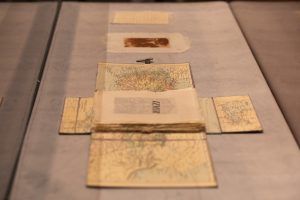
Artist Ellen Benjoya-Skotheim’s “Izmir Artist Book” on display
Visual artist Harry Naar drew from personal family memories for his ten-painting series “Echoes of Salonica.” His artistic identity is a particularly poignant inspiration for this event as Naar, a former professor of Fine Arts and gallery director at Rider University, is also the father of Prof. Devin E. Naar. The two participated in an intergenerational conversation hosted at Hillel UW as part of the symposium, a highlight for all who attended.
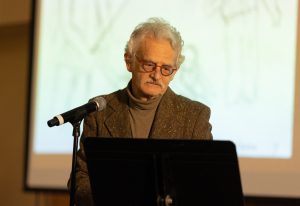
Artist Harry Naar presents his artwork to the audience at Muestros Artistas [Our Artists]
Joel Benoliel, a key supporter of the Hazzan Isaac Azose Fund for Community Engagement which made the symposium possible, reflected, “In a fitting tribute to Hazzan Isaac Azose, and his lasting impact in our community and around the world, Muestros Artistas brought together a highly diverse group of skilled artists … to the delight of the Seattle audience. It was a triumphant event, offering hopes for a continued and unique focus on the arts in coming years.”
![Muestros Artistas [Our Artists] audience members Hazzan Isaac Azose and wife smiling and clapping](https://jewishstudies.washington.edu/wp-content/uploads/2023/08/Azose-300x200.jpg)
Hazzan Isaac Azose and wife Elisa enjoying the artists’ presentations
Perhaps we should write a corollary to the Ladino refran Kualo es la ermoza, la ke te plaze a ti (Beauty is what pleases you).* To emphasize the revelatory communal experience during Muestros Artistas, we might also say: Kualo es la ermoza, la ke mos plaze a mozotros—Beauty is what is pleasing to us.
The next opportunity to explore the Sephardic arts nexus will be in March 2024, with an event series continuing to highlight and celebrate those striving to express Sephardic identity on their own creative terms.
*Literally: What is beauty? —that which is pleasing to you.
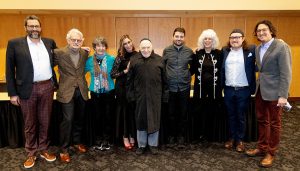
Left to right: Gabriel Solis (Divisional Dean of the College of Arts), Harry Naar, Jane Mushabac, Sarah Aroeste, Hazzan Isaac Azose, Tom Haviv, Ellen Benjoya Skotheim, Asher Shasho Levy, Devin E. Naar (Sephardic Studies Program Chair and Isaac Alhadeff Professor of Sephardic Studies).
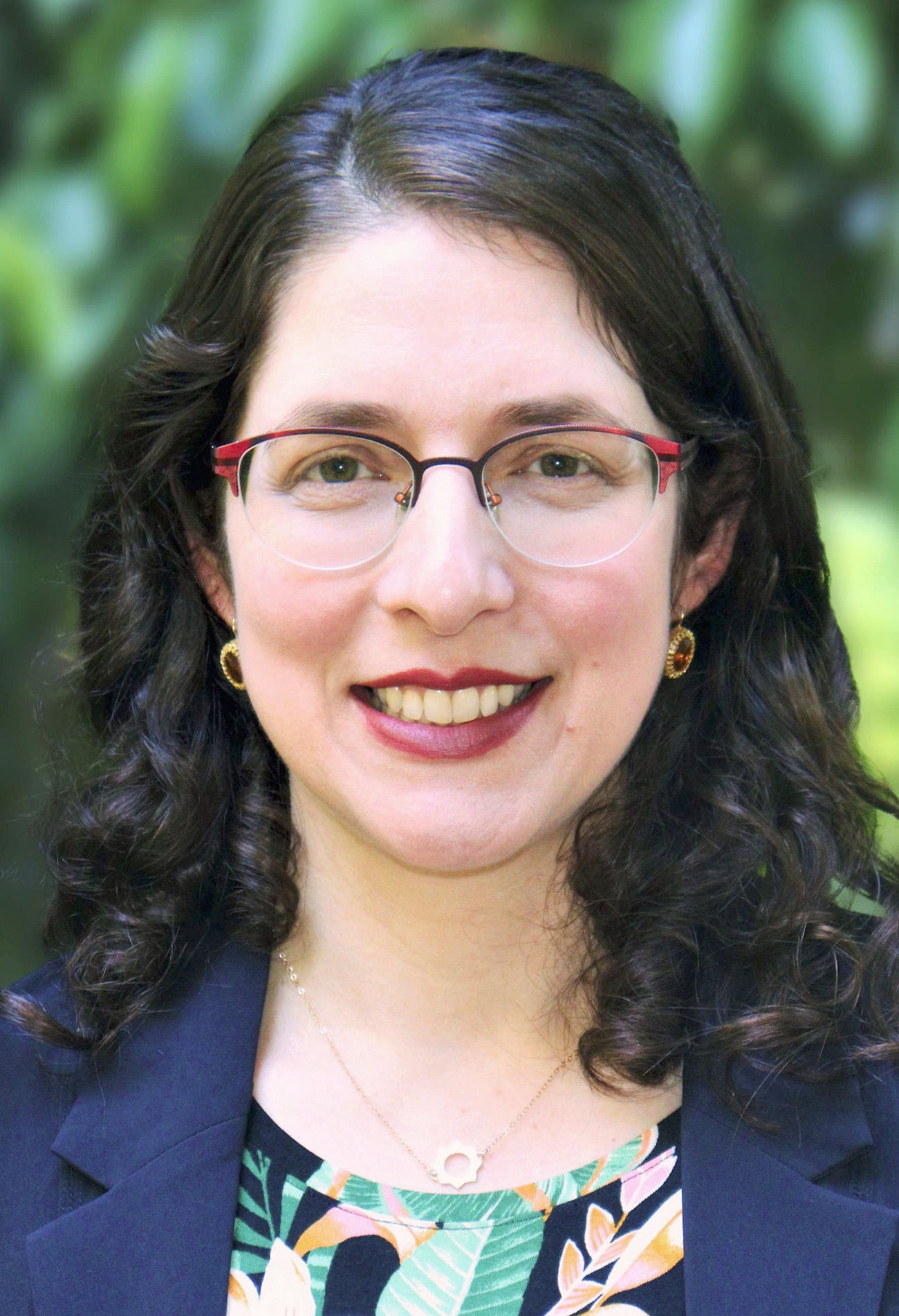 Hannah S. Pressman is the Director of Education and Engagement at The Jewish Language Project, and writes about modern Jewish culture, religion, and identity. She earned her Ph.D. in modern Hebrew literature from New York University and has published her work in a broad range of academic and journalistic venues. Recent publications include contributions to What We Talk About When We Talk About Hebrew (and What It Means to Americans) (University of Washington Press, 2018); The New Jewish Canon: Ideas & Debates, 1980-2015 (Academic Studies Press, 2020); and Sephardic Trajectories: Archives, Objects, and the Ottoman Jewish Past in the United States (Koç University Press/University of Chicago Press, 2021). She is currently at work on “Galante’s Daughter: A Sephardic Family Journey,” a multi-vocal memoir that traces her family’s twentieth century travels from the Levant and Lithuania into southern Africa and beyond. This project was recently recognized with a Research Award from the Hadassah-Brandeis Institute. Pressman is the former Communications Director, Graduate Fellowship Coordinator, and Hazel D. Cole Fellow at the Stroum Center for Jewish Studies.
Hannah S. Pressman is the Director of Education and Engagement at The Jewish Language Project, and writes about modern Jewish culture, religion, and identity. She earned her Ph.D. in modern Hebrew literature from New York University and has published her work in a broad range of academic and journalistic venues. Recent publications include contributions to What We Talk About When We Talk About Hebrew (and What It Means to Americans) (University of Washington Press, 2018); The New Jewish Canon: Ideas & Debates, 1980-2015 (Academic Studies Press, 2020); and Sephardic Trajectories: Archives, Objects, and the Ottoman Jewish Past in the United States (Koç University Press/University of Chicago Press, 2021). She is currently at work on “Galante’s Daughter: A Sephardic Family Journey,” a multi-vocal memoir that traces her family’s twentieth century travels from the Levant and Lithuania into southern Africa and beyond. This project was recently recognized with a Research Award from the Hadassah-Brandeis Institute. Pressman is the former Communications Director, Graduate Fellowship Coordinator, and Hazel D. Cole Fellow at the Stroum Center for Jewish Studies.






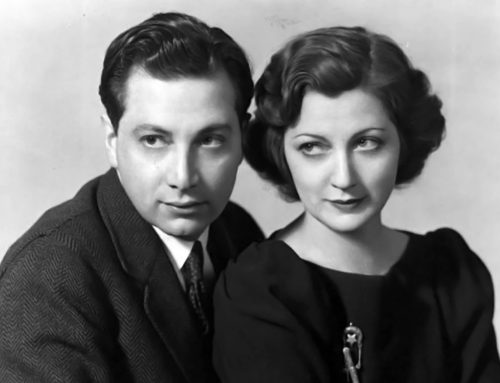
Leave A Comment